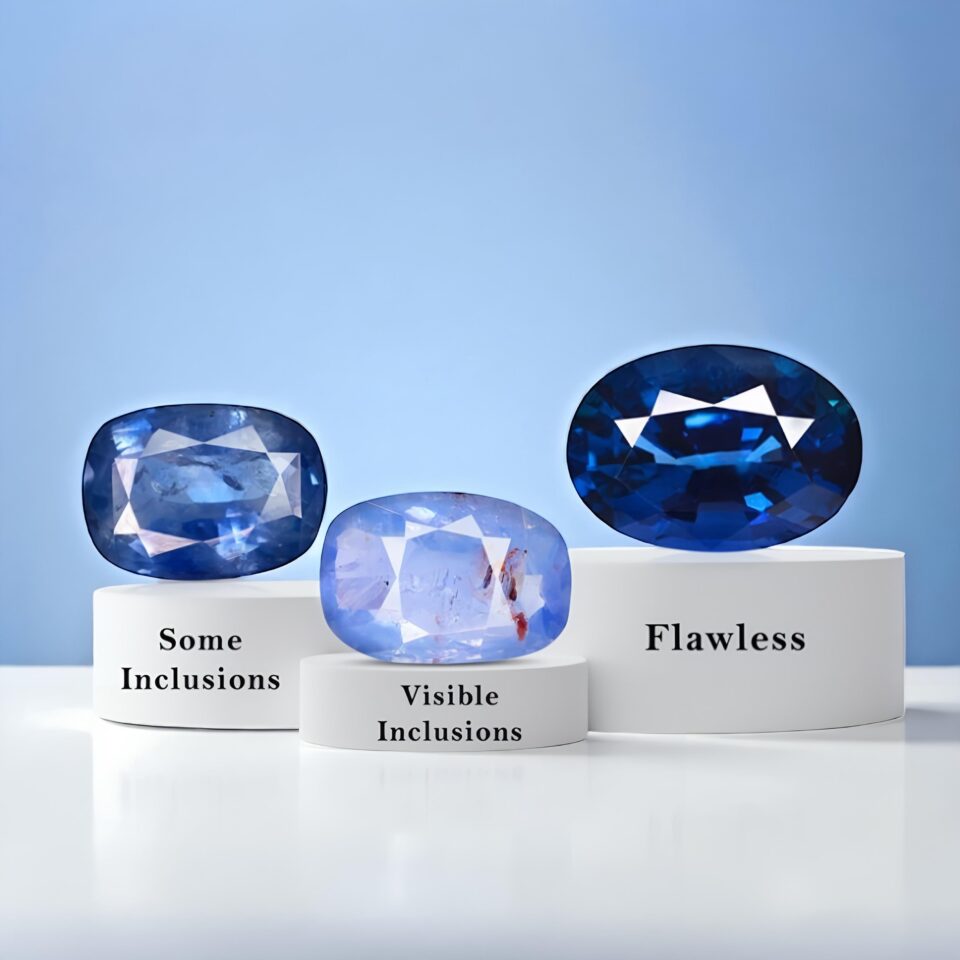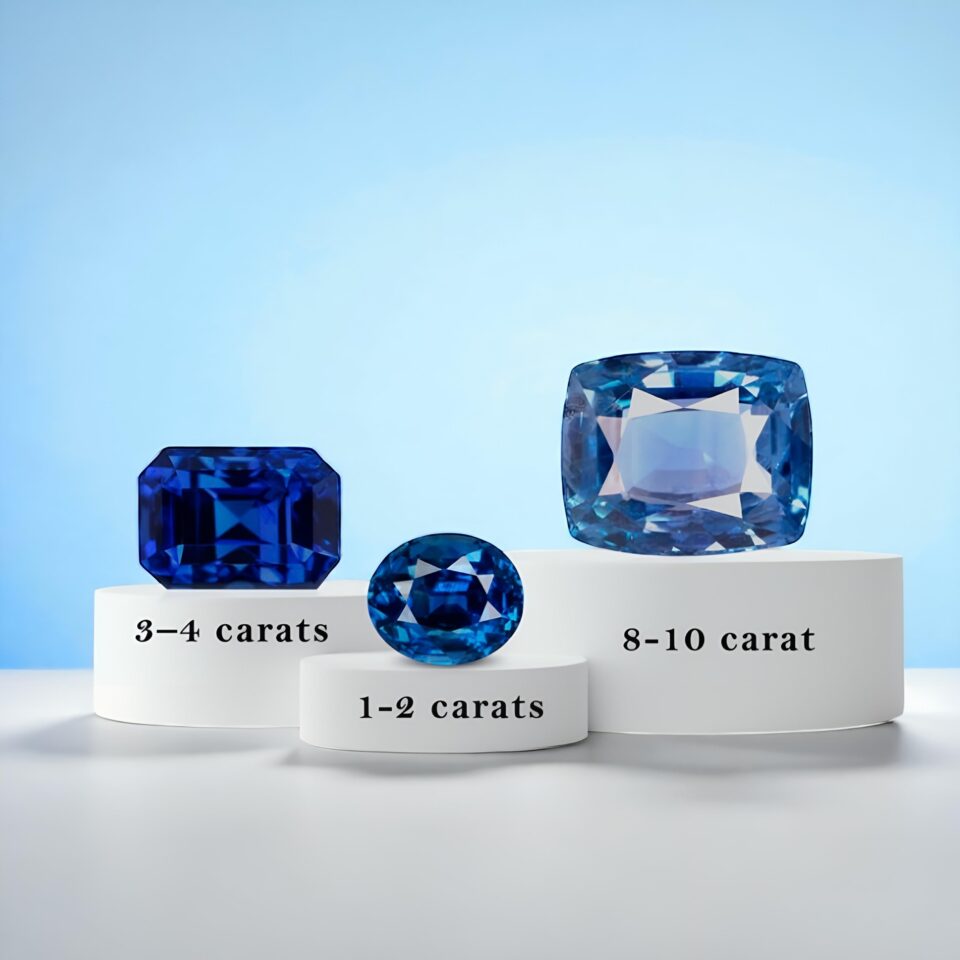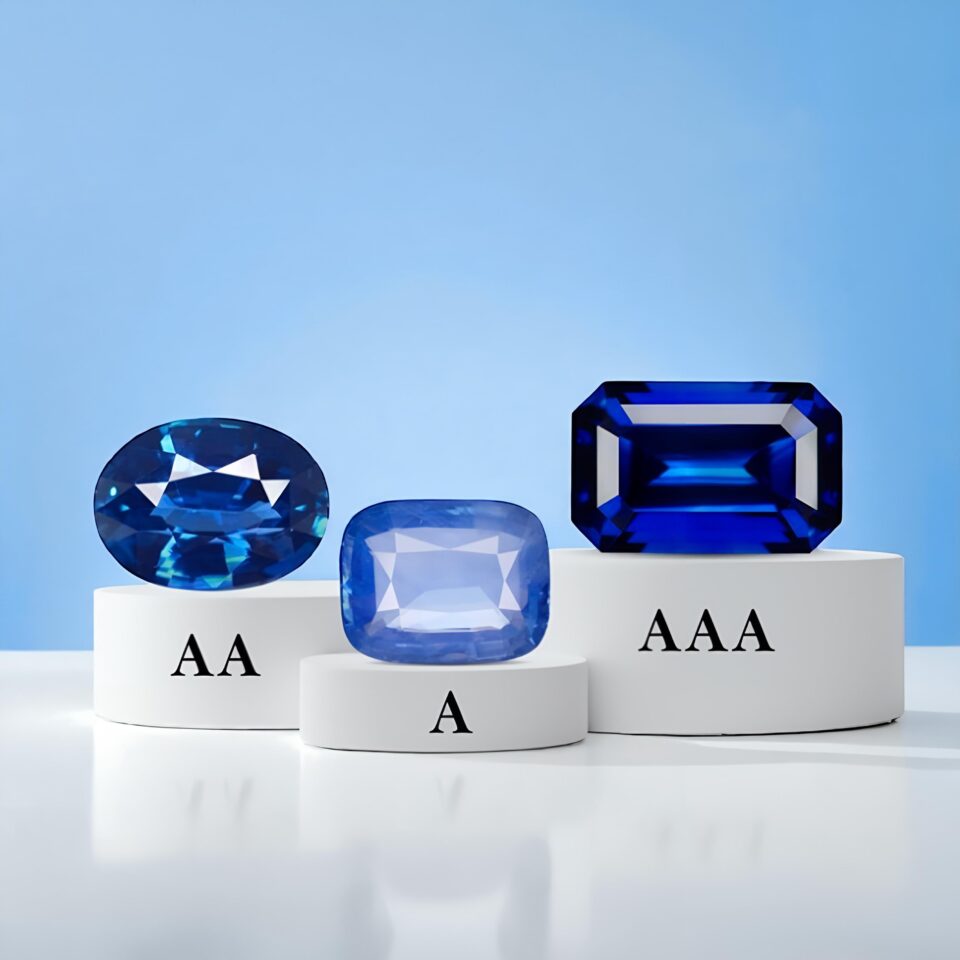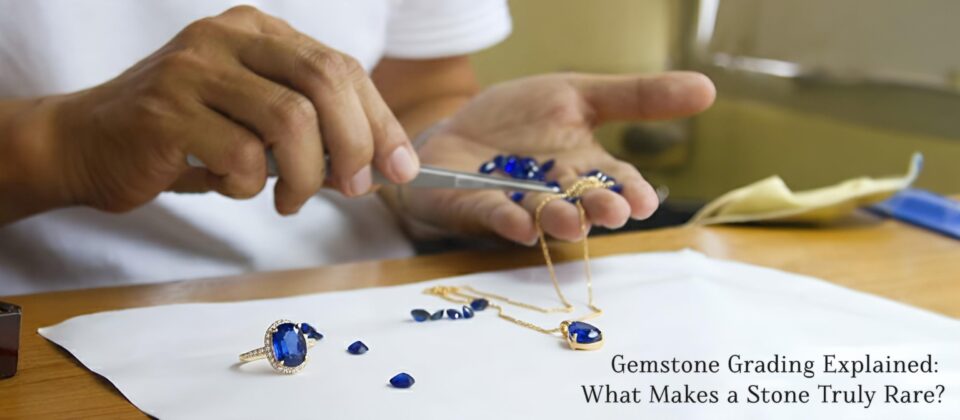Rare gemstones are exceptional. But how do you analyse their quality or make out that they are actually different from other gemstones? For instance, the Kashmir blue sapphire stone is rare and thus expensive, but what makes it more valuable than other blue sapphires? This is where gemstone grading comes into play. In this blog, we will discuss this gemstone evaluation system.
What Is Gemstone Grading?
Gemstone grading refers to analysing and ranking gemstones’ quality based on the 4Cs. The 4Cs refer to gem traits such as color, clarity, cut, and carat weight. For both precious and semi-precious gems, the evaluation is the same by this method. Even origin and treatment are also criteria of assessment. This helps buyers know if the stone is common or truly rare.
The Key Factors in Gemstone Grading
Certified gemologists grade gemstones. The evaluation is being documented as a report known as a gemstone certificate. Therefore, whenever you purchase a gemstone, it is highly recommended to request a certificate.
Every detail is outlined in this document to ensure that you receive a natural gemstone. The GIA issues the most reputable and widely recognized gemstone certificates. Let’s see what the grading factors are that contribute to identifying a gem as truly rare.
Read More: Is Your Gemstone Authentic? Essential Tips Every Consumer Should Know – navratan.us
- Color – The Heart of the Stone
Gemstone color grading depends upon:
Hue: The actual color. For instance, ruby stone comes only in red as the primary color.
Tone: How light or dark the stone looks
Saturation: How intense or vivid the color is.
A perfect gemstone is vivid in color, has high saturation, and a medium tone. Such gemstones are highly prized.
Clarity – The Flaws Inside
All natural gemstones have inclusions. These are imperfections inside the gem that can be solid, liquid, gas, or other marks. For instance, the silky rutile needles in a Kashmir sapphire offer it a soft glow, making it even more prized. For diamonds, inclusion grading ranges from Flawless to Included (I1, I2, I3).

2. Cut – The Sparkle Factor
The finest cut is the sparkle. A poor cut can make even a valuable gem look dull. Best gemstone cuts that offer maximum brilliance are: round brilliant cut, emerald cut, and marquise cut.
3. Carat Weight-Bigger Isn’t Always Better
High carat weight gemstones are not easy to find. But size alone doesn’t make a gem rare. Even a smaller carat-weight gemstone can be expensive if it has high clarity, a fine cut, and an impressive color.

4. Origin: Gemstone Existence
Where the gem comes from matters a lot. Some places are famous for the best stones:
Kashmir for blue sapphires
Burma (Myanmar) for ruby stone
Colombia for emerald stone
Because mines in these regions are limited or closed, stones from there are scarce.
5. Treatments: Natural vs. Enhanced
In the gemstone market, nearly 90% of the gemstones are treated. It isn’t easy to find the untreated gem. Such gems are rare and expensive.
6. Certificate: Proof of Quality
A certificate from trusted labs like GIA or IGI provides information about the identity, quality, and whether it has been treated or not.
Read More: Is It Safe to Purchase Gemstones Online? – A Buyer’s Checklist – navratan.us
7. Gemstone Grading Scale:
AAA Grade
- Best quality stones.
- Rich, vibrant color and very few marks inside.
- Used in fine jewelry and considered the top choice. The AAA blue sapphire stone is scarce and expensive.
Read More: How to Identify Genuine Blue Sapphire: Color, Cut & Certification – navratan.us
AA Grade
- Good quality stones.
- Nice color and clarity, but may have minor flaws.
- Commonly used in mid-range jewelry.
A Grade
- Average quality.
- Noticeable inclusions and lighter or uneven color.
- Primarily used in everyday or affordable jewelry.
Lower Grades (B, C, etc.)
Faded color and many marks.

What Truly Makes a Gem Rare?
- A rich and vivid color
- High clarity with little to no flaws
- Large size with good quality
- A famous origin (like Kashmir or Burma)
- Untreated and natural condition
Gemstone grading is the process by which you can clearly determine whether a gemstone is valuable or not. If you are looking for a trusted gemstone seller that provides accurate information about the stone according to the grading system, then Navratan is a popular choice.

